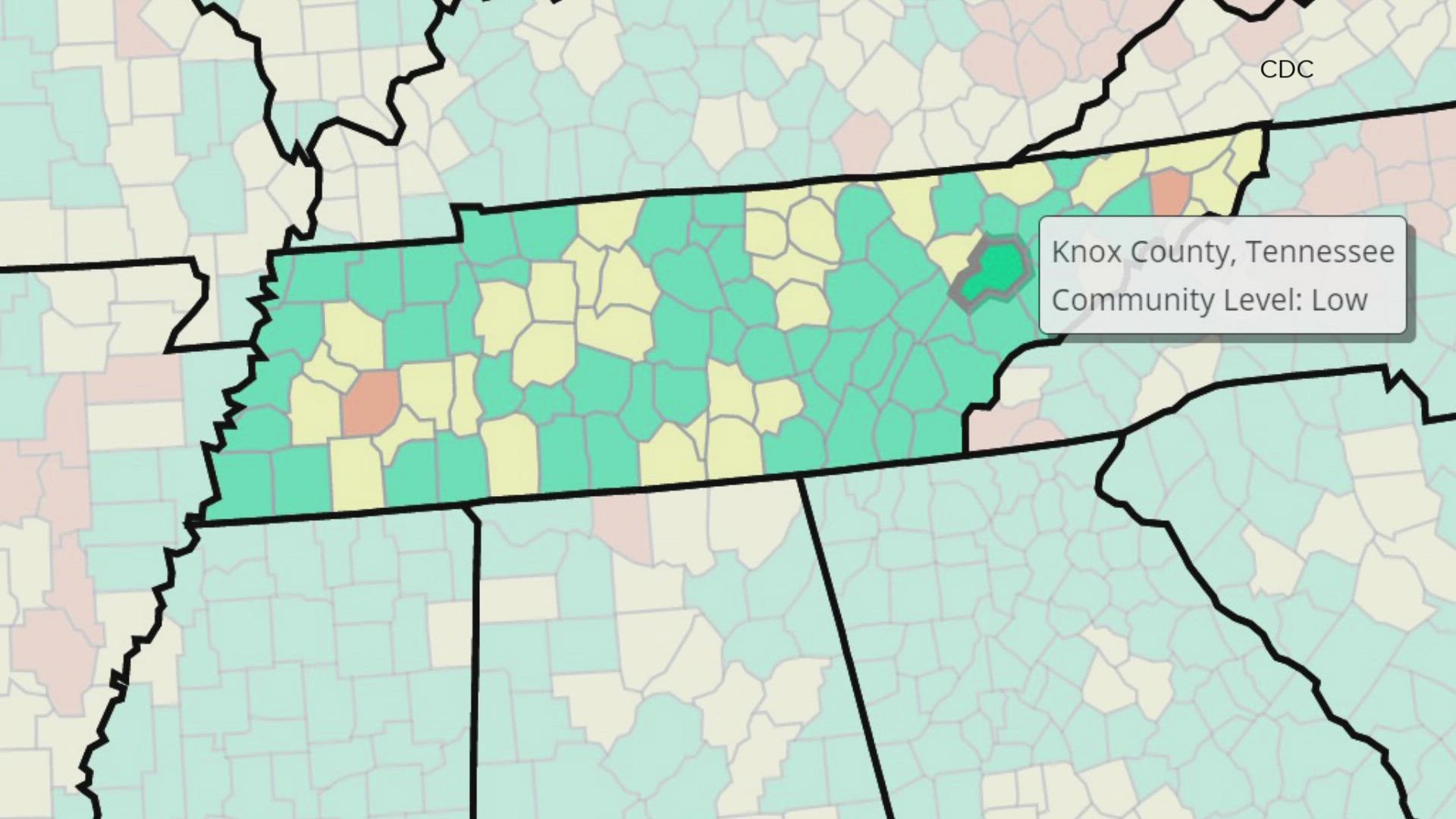KNOXVILLE, Tenn. — COVID-19 cases and hospitalizations continue to decline in East Tennessee, and on Thursday the Centers for Disease Control and Prevention reported the area was almost entirely in the "green" again as the virus' spread tapers off and its impact on the community lessens.
The Knox County Health Department's most recent data through Sept. 24 showed cases declined to seven cases per 100,000 people in the past seven days, with current hospitalizations down to 71.
The CDC reported lower COVID-19 community levels across East Tennessee, with the exception of the Tri-Cities region. In the past month, the CDC has reported declining positivity rates and tests performed in Knox County, which is a good sign the virus is not spreading around locally as much as it was in the past few months.
The Great Smoky Mountains National Park also announced Friday it would be suspending its mask rules for indoor facilities now that all Tennessee and North Carolina counties that surround the park have had seven straight days of medium or low community impact.

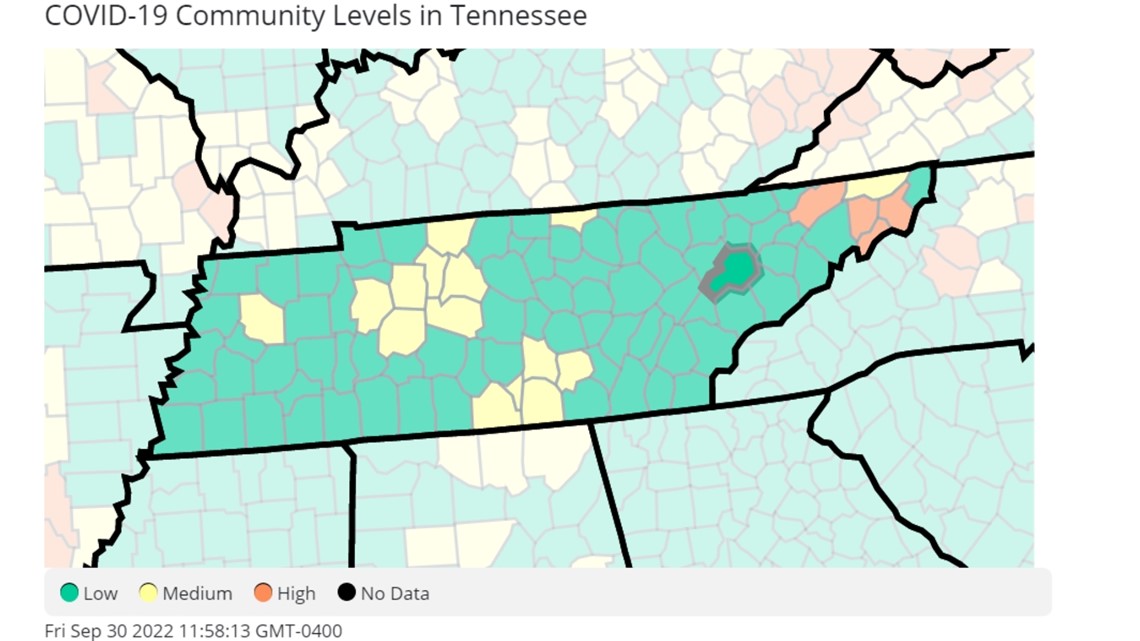
The growth and decline of the virus every few months has become a familiar story over the past two years. First, there was the prolonged initial outbreaks in 2020 that prompted the global pandemic that eventually peaked in the fall and winter. Then came the Delta variant's surge of cases and hospitalizations in the summer of 2021, followed by the Omicron variant's massive and rapid spike in cases last winter. However, the most recent COVID wave has been noticeably different when looking at its progression by the numbers: It's both slow and low by comparison.
If you recall back in early 2020 the mantra of "flatten the curve" when the pandemic first hit, this wave was just that for East Tennessee when looking at case and hospitalization data -- a mostly flat curve that was drawn out for months longer than the others that saw shorter, rapid spikes.

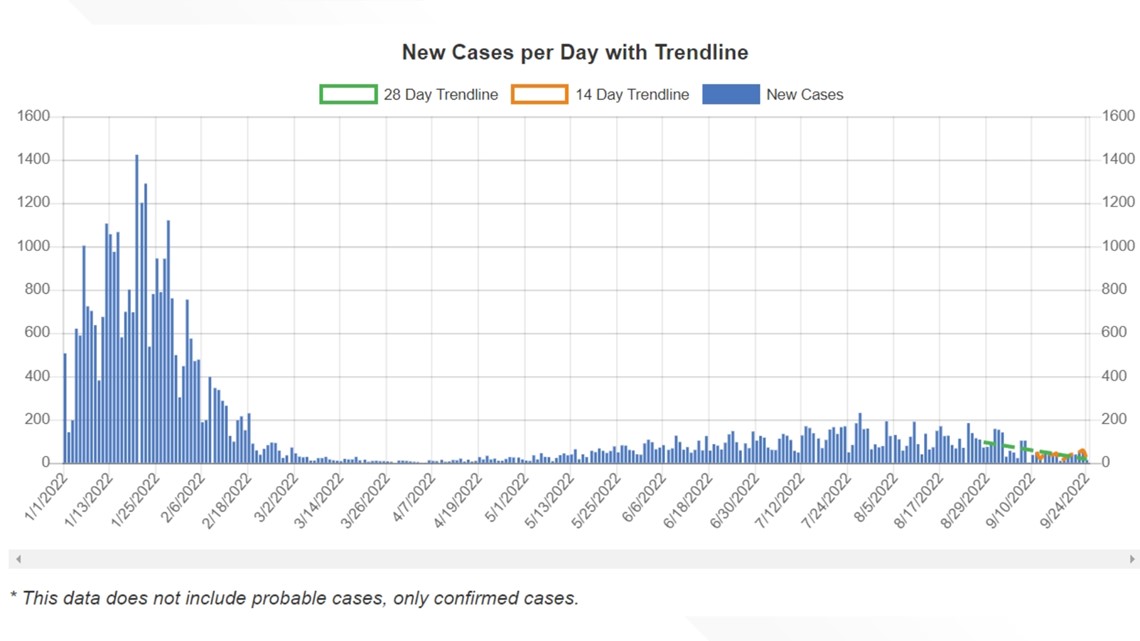
What wasn't flat was case positivity rates. Starting in April, there was a steady increase in the percentage of positive cases being reported in Knox County before it hit record levels this summer, but the weekly number of lab tests being conducted had not budged much. This is where the most recent COVID wave has differed from the past waves, which saw matching spikes in the number of lab tests alongside higher positivity rates when COVID was spreading rampantly.

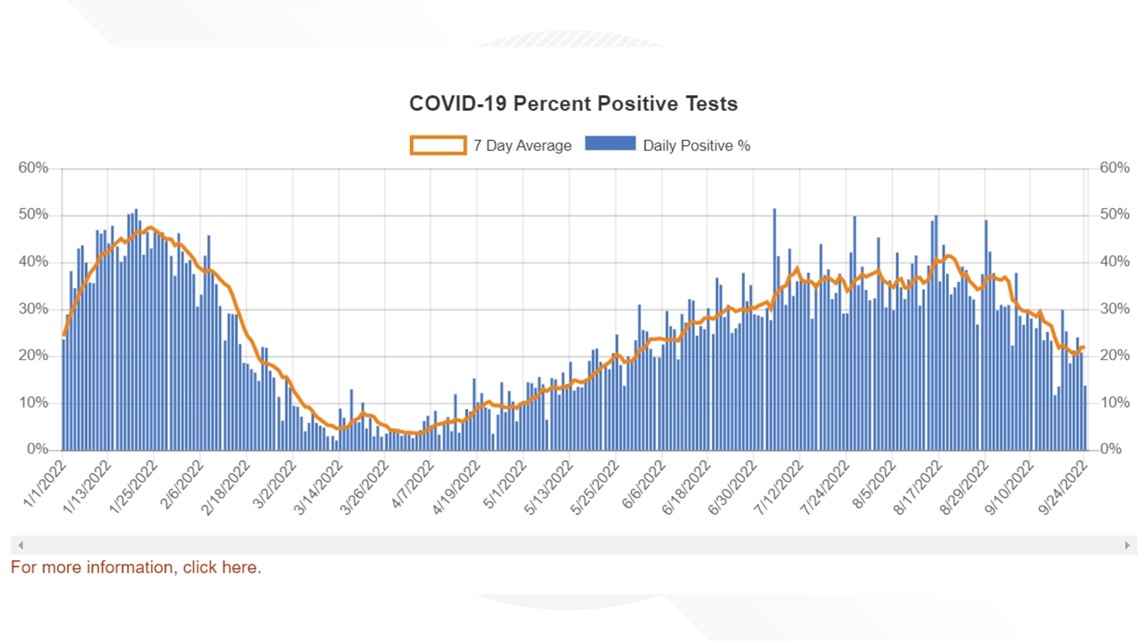

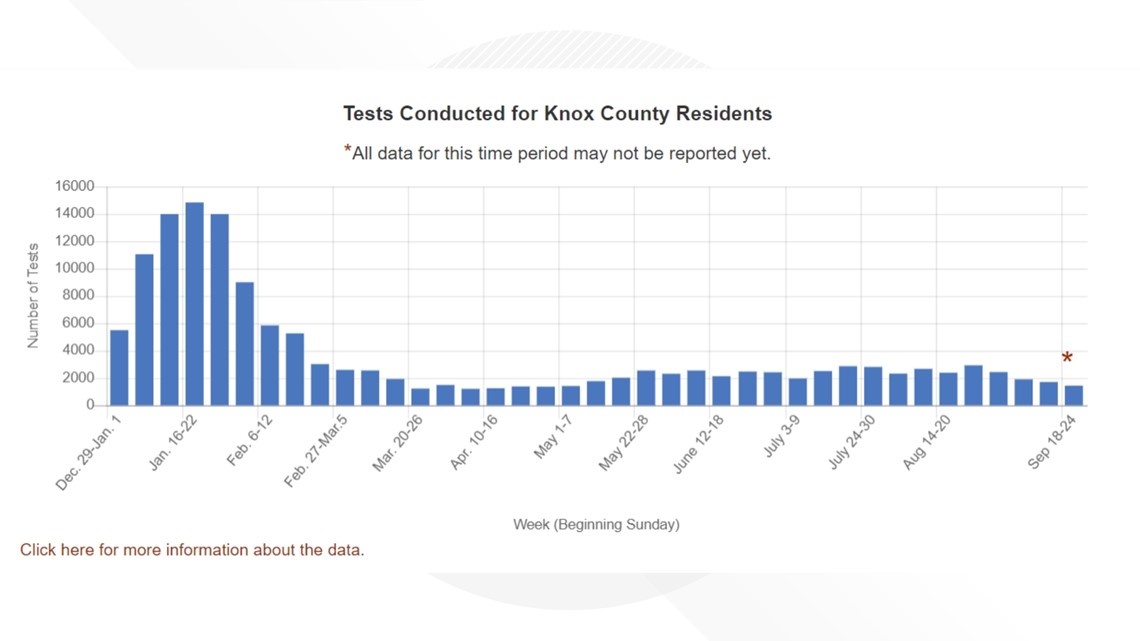
Part of this difference is believed to be due to the increased availability of at-home tests. Health officials have said for months many more people in the community were likely contracting COVID-19 but were not "seen" in the data because those tests do not get reported. The other part of this is that it's also likely many people are not getting tested at all, which could indicate the severity of the COVID virus and its symptoms has been lessening on average.
A similar picture is being seen across the U.S., prompting optimism from leaders such as President Joe Biden who said the COVID-19 pandemic "is over." Health experts said we're still "not there yet," but that things are definitely improving on that front.
"Last week, the number of weekly reported deaths from COVID-19 was the lowest since March 2020. We have never been in a better position to end the pandemic," WHO Director-General Tedros Adhanom Ghebreyesus said. "We're not there yet, but the end is in sight."
Experts caution there may be another wave of COVID cases coming to coincide with the seasonal flu's rise beginning in the fall, recommending people to get booster shots before winter to reduce the severity and chances of catching either virus.

